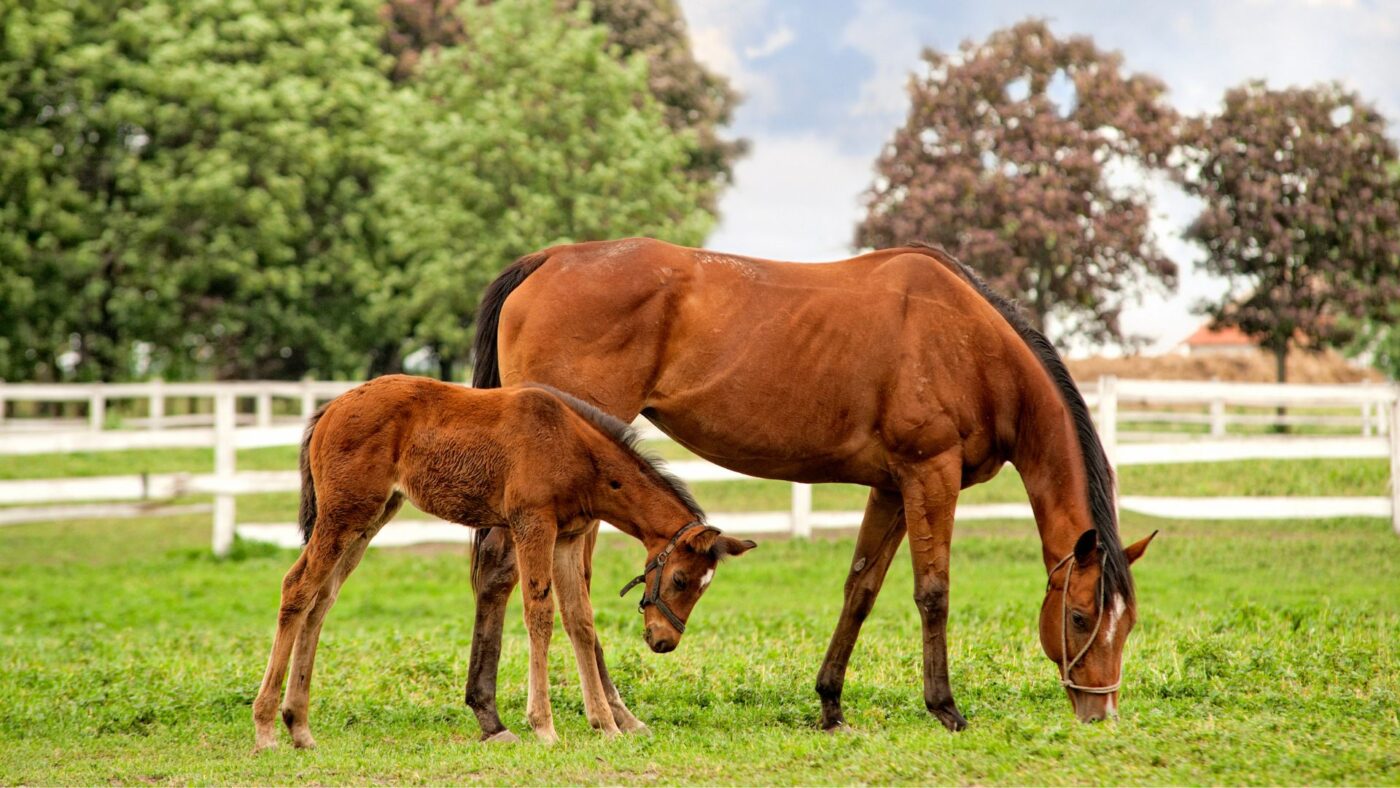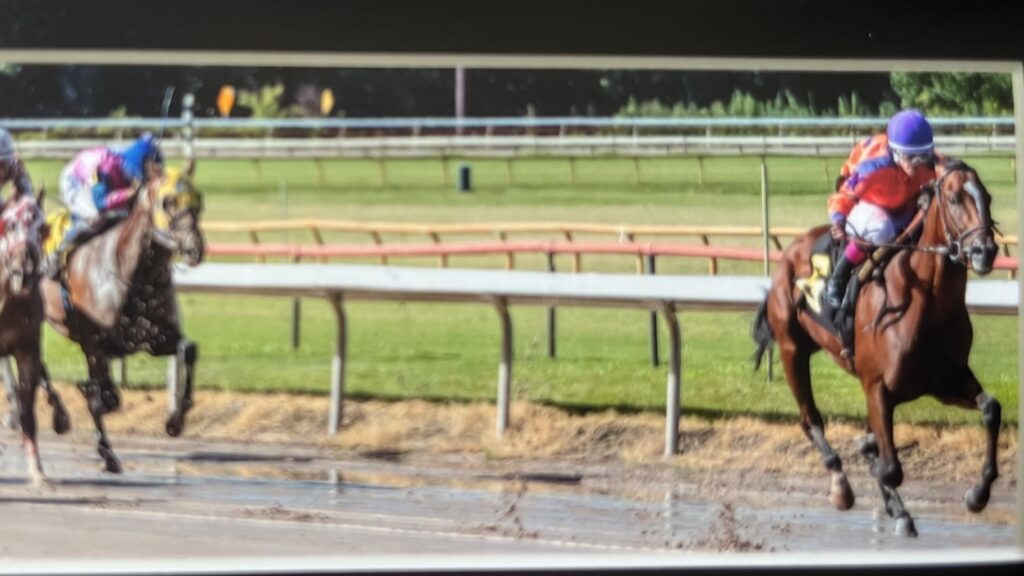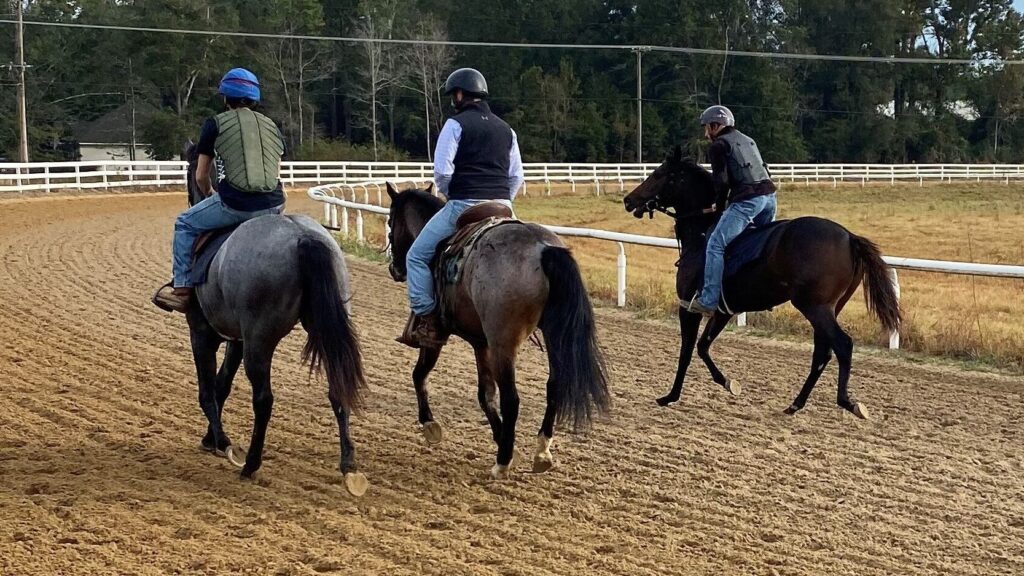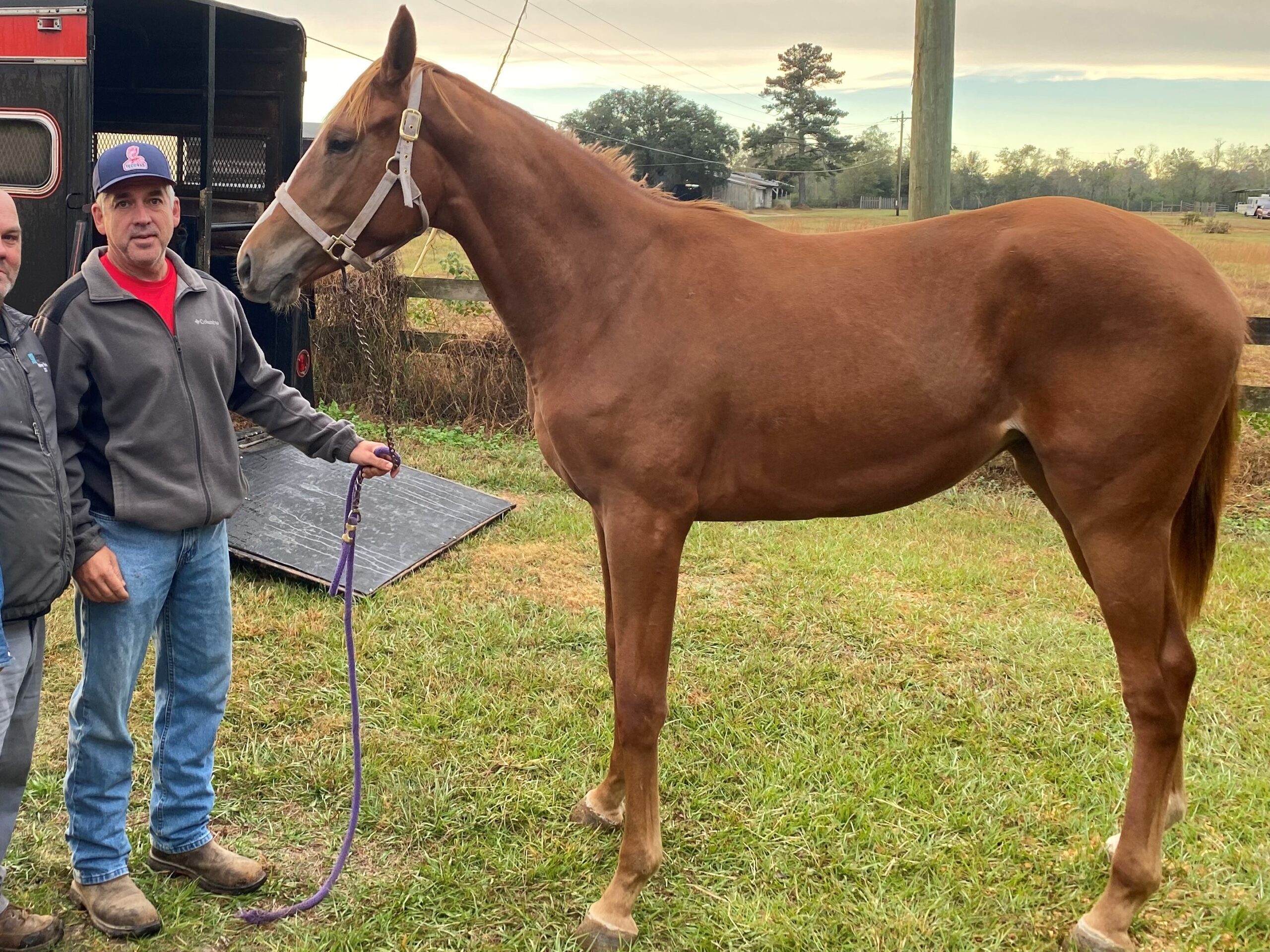Last updated: March 10, 2025
Thoroughbred breeding economics is an intricate balance of passion and business acumen. It involves substantial financial investments, careful decision-making, and a deep understanding of both genetics and market dynamics. This article expands on critical aspects such as costs, genetic testing, auction strategies, and ethical breeding practices to provide a comprehensive guide for those involved in this rewarding yet high-stakes industry.

Breaking Down the Costs of Thoroughbred Breeding
Breeding Thoroughbreds involves several significant expenses, including:
- Broodmare and Stallion Acquisition: Initial investments in quality broodmares and stallions can vary widely based on their pedigree, performance history, and reproductive health.
- Stud Fees: Stallion services range from a few thousand to hundreds of thousands, reflecting the stallion’s reputation and progeny performance. Check Stud Fees Prices.
- Mare Maintenance and Veterinary Care: Nutrition, housing, farrier services, and regular veterinary check-ups—including reproductive exams and vaccinations—ensure optimal health for breeding mares.
- Raising Foals: Feeding, vaccinations, and early training contribute to the costs of preparing a foal for sale or racing.
- Infrastructure: Investments in safe housing, fencing, and exercise spaces are essential for a well-run breeding operation.

Effective Broodmare Management for Profitability
Effective broodmare management is a cornerstone of a profitable Thoroughbred breeding operation. Success depends on maintaining reproductive efficiency, soundness, and effective financial planning while prioritizing ethical practices. Here’s how to optimize broodmare management:
Understanding Reproductive Efficiency
Ensuring each broodmare produces a marketable foal annually is key to profitability. Factors influencing efficiency include:
- Mare Age: Fertility decreases as mares age, reducing the likelihood of producing a foal.
- Foaling Date: Mares foaling earlier in the year have a higher chance of maintaining a yearly breeding cycle.
- Multiple Matings: Requiring multiple attempts to conceive can lower overall breeding success.
- Timely Rebreeding: Rebreeding mares as soon as safely possible after foaling maintains a consistent foaling interval.
Actionable Tip: Use tools like ovulation prediction kits and palpation to ensure precise timing for mating.
Assessing Breeding Soundness
Evaluating a mare’s reproductive health ensures the best chance of success before breeding investments.
- Physical Health: Assess body condition, leg structure, and overall health. Mares in poor condition are less likely to conceive.
- Reproductive History: Review past breeding performance, focusing on the number of foals and any complications.
- Reproductive Exams: Perform thorough exams to identify issues like uterine infections or pelvic abnormalities.
- Endometrial Biopsy: A biopsy of the uterine lining can predict the mare’s ability to carry a foal to term.
Practical Example: A mare with a history of multiple foal losses underwent an endometrial biopsy, which revealed a treatable infection. After treatment, the mare successfully carried a foal.
Managing the Estrous Cycle
Understanding and managing the estrous cycle improves conception rates.
- Seasonal Polyestrus: Mares cycle during specific seasons, typically spring and summer.
- Artificial Lighting: Extend daylight hours to induce earlier cycling during off-seasons.
- Ovulation Monitoring: Use ultrasound or palpation to track follicular development and time inseminations accurately.
- Foal Heat Breeding: Breeding during foal heat (10-14 days post-foaling) can maintain annual foaling intervals, though some mares may need additional recovery time.
- Hormonal Interventions: Medications like hCG or GnRH can stimulate ovulation when follicles reach optimal size.
Expert Insight: Consult your veterinarian about the risks and benefits of foal heat breeding for individual mares.

Balancing Costs with Results
Breeding operations thrive on strategic financial management.
- Calculate costs per foal rather than per mare, factoring in the maintenance of non-productive mares. Focus on breeding high-value mares to maximize profitability.
Ethical and Sustainable Practices
Ethical management improves industry reputation and long-term viability.
- Promote Genetic Diversity: Avoid inbreeding by selecting sires and dams from diverse bloodlines.
- Support Aftercare: Partner with organizations like the Thoroughbred Aftercare Alliance (TAA) to rehome retired racehorses.
- Prioritize Quality: Focus on producing fewer, high-quality foals rather than overproducing to minimize unwanted horses.
Practical Tools and Resources
- Cross-Links: Learn about estrous synchronization and broodmare nutrition during pregnancy for additional tips.
- Glossary: Refer to our Breeding Glossary for definitions of terms like “seasonal polyestrus” and “endometrial biopsy.”
- Financial Calculator: Use online tools to estimate costs and potential returns for each breeding cycle.
Genetic Testing: How Science Supports Smart Breeding

Advances in genetic testing allow breeders to make informed decisions, improving breeding outcomes and reducing risks.
Key Genes That Impact Performance
- The Myostatin (MSTN) Gene: Known as the “speed gene,” MSTN impacts muscle development and determines whether a horse is better suited for sprinting or stamina. For example:
- Horses with the “C:C” variant excel at shorter distances.
- Horses with the “T:T” variant perform well in long-distance races.
- “C:T” horses strike a balance, making them versatile across distances. Read more about Horse Speed Genetics.
- Mitochondrial DNA (mtDNA): Passed from the dam, mtDNA affects energy metabolism and performance. Breeders often prioritize mares with strong maternal lines for this reason.
- Practical Applications: Genetic tests like those for MSTN help breeders tailor their breeding programs. For instance, the success of Galileo Gold was partly attributed to strategic breeding informed by genetic testing.
- Ethical Considerations: Overemphasis on specific traits, such as speed, could reduce genetic diversity, leading to health issues and limiting the breed’s long-term viability. Balancing performance traits with overall genetic health is critical.
Practical Applications for Your Breeding Program
Step 1: Identify Your Goals
- Clarify Objectives: Decide whether you’re testing for speed potential, stamina, or genetic disorders.
- Focus on Traits: Prioritize the traits that align with your breeding program, such as performance or health.
Step 2: Choose a Reputable Testing Lab
- Use a trusted lab like UC Davis or the Gluck Research Center, following their instructions for proper sample collection and handling.
Step 3: Interpret and Apply Results
- Consult a geneticist or veterinarian to apply test findings, such as MSTN variants, to your breeding goals.
Step 4: Keep Detailed Records
- Track Outcomes: Document genetic test results and monitor offspring performance for continuous improvement.

What Determines a Thoroughbred’s Value?
Several key factors determine a Thoroughbred’s value, both at auction and on the racetrack.
- Pedigree and Bloodlines: Horses from successful bloodlines, such as those descending from Northern Dancer or Mr. Prospector, command higher prices.
- Performance: Race records and speed figures play a significant role in a horse’s valuation.
- Physical Conformation and Athletic Potential: Physical attributes like muscle tone, leg length, and symmetry influence a horse’s athletic potential and appeal. Read Evaluating Horse Conformation by University of Georgia Extension to learn more.
- Nicking Patterns: Certain sire and dam combinations, such as Northern Dancer paired with Raise a Native lines, produce consistent champions.
- Market Trends: Current demand for specific bloodlines and international interest influence pricing.
- Auction Presentation: Grooming, professional photos, and video marketing can enhance a horse’s perceived value.
Mastering Thoroughbred Auction Strategies
Thoroughbred auctions are critical opportunities for both buyers and sellers. Employing the right strategies can maximize success.
- Pinhooking: This involves purchasing weanlings or yearlings and reselling them after further development.
- Steps to Success: Evaluate conformation, pedigree, and early development.
- Case Study: I’ve seen a pinhooker purchase a yearling at the Keenland Yearling Sale for $50,000, put it in training and later sell it at the Ocala two year old in training sale for $150,000.
- Pedigree Analysis: Buyers meticulously analyze bloodlines, focusing on sires and dams known for producing champions.
- Explore more about Racehorse bloodlines.
- Market Awareness: Stay informed about trends like the rise of online auctions and international buyers, which have reshaped the industry. Learn more tips on how to buy horses at auctions.
How to Prepare a Horse for Auction

Step 1: Evaluate the Horse
- Assess Key Traits: Examine conformation, pedigree, performance data, and health.
- Use Tools: Refer to resources like the Jockey Club Pedigree Online or Equineline.
Step 2: Prepare the Horse
- Grooming: Ensure the horse is immaculately groomed with a polished coat, trimmed mane, and maintained hooves.
- Training: Teach the horse to present its movement and temperament confidently.
Step 3: Create Marketing Materials
- Photos and Videos: Use professional photos and videos to highlight strengths.
- Pedigree Details: Showcase lineage and notable ancestors in all marketing materials.
Step 4: Positioning and Presentation on Auction Day
- Strategic Placement: Strategically position the horse for pre auction views and during the auction.
- Strong Presentation: Use skilled handlers to answer buyer questions and showcase the horse.
Step 5: Using Bloodstock Agents Effectively
- Expert Advice: Agents evaluate pedigrees and market trends, helping maximize sales.
- Industry Connections: Agents can connect you with serious buyers and negotiate favorable terms.

Ethical Breeding Practices for Long-Term Success
Ethical breeding prioritizes the health and well-being of horses, ensuring sustainable practices that benefit the entire industry.
- Reducing Risk of Injury and Disease:
- Minimize risks by using genetic testing to avoid inherited health issues and carefully monitoring mares during breeding, as discussed earlier.
- Caring for Retired Racehorses:
- Partner with organizations like the Thoroughbred Aftercare Alliance (TAA) to rehome retired racehorses.
- Support retraining programs that prepare Thoroughbreds for second careers in disciplines like dressage or eventing.
- Sustainable Breeding Practices:
- Focus on quality over quantity to reduce the number of unwanted horses.
- Consider market demand before breeding, ensuring foals are likely to find good homes.
- Transparency and Collaboration:
- Maintain open communication with buyers and the industry.
- Consult veterinarians and geneticists to make informed, ethical breeding decisions.
Maximizing Return on Investment (ROI) in Breeding
While ROI in Thoroughbred breeding is not guaranteed, smart strategies can improve outcomes.
- Leveraging Racing Success: Prestigious wins, like Justify’s Triple Crown, significantly increase a horse’s value, but such success is rare.
- Stud Fees: Long-Term Income Opportunities: Stallions like Galileo earned millions annually due to their proven progeny.
- Secondary Careers: Retired Thoroughbreds trained for other disciplines broaden market appeal and profitability.

FAQs About Thoroughbred Breeding
What are the major costs involved in Thoroughbred breeding?
Initial Investment: Acquiring broodmares, facilities, and infrastructure.
Stud Fees: Stallion services range widely, from a few thousand to hundreds of thousands.
Mare Care: Nutrition, housing, and veterinary services.
Raising Foals: Feed, vaccinations, and early training.
How does genetic testing influence Thoroughbred breeding decisions?
Genetic testing helps breeders:
Identify sprinting or stamina traits via the MSTN gene.
Understand maternal lineage through mitochondrial DNA.
Avoid inherited health issues and promote genetic diversity.
What are some key auction strategies for buying and selling Thoroughbreds?
Pedigree: Strong bloodlines increase value.
Performance: Race records and speed figures matter.
Conformation: Physical traits signal athletic ability.
What are ethical considerations in Thoroughbred breeding?
Use genetic testing to reduce injury risk.
Rehome retired racehorses through aftercare programs.
Breed responsibly by focusing on quality, not quantity.

Conclusion: Combining Passion and Strategy in Breeding
Thoroughbred breeding is as much an art as it is a business. By leveraging advances in genetic testing, employing smart auction strategies, and adhering to ethical breeding practices, breeders can maximize their success while promoting the long-term health of the industry.
Whether you’re pinhooking for profit or aiming for a champion, success lies in thoughtful planning and ethical practices. Subscribe for more insights, and explore resources like Equineline and the Thoroughbred Aftercare Alliance to deepen your knowledge.

About the Author: Miles Henry
Lifelong Horseman | Racehorse Owner | Published Author
Miles Henry brings over 25 years of hands-on experience training and owning Thoroughbred racehorses. Raised with Quarter Horses and Appaloosas, he’s spent a lifetime learning from horses—on the track, in the barn, and in the field. Today, he runs a small but successful racing stable in Louisiana and shares real-world insights on HorseRacingSense.com, helping horse owners, fans, and bettors navigate the sport with confidence.
📚 Books: View Miles’s books on Amazon »
🎧 Podcast Guest: Animal Tales Ep. 32 |
YouTube Interview
📩 Newsletter: Sign up for racing tips and horse care advice »
🔗 Follow Miles:
Twitter |
Facebook |
YouTube

